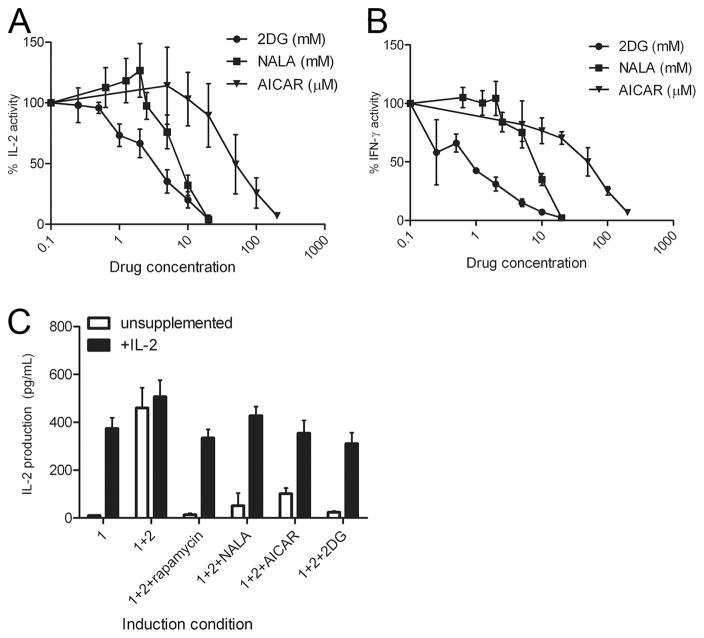FIGURE 3.
Metabolic inhibition leads to decreased T cell function. Previously activated (Th1) 5C.C7 T cells were stimulated in varying concentrations of 2DG (mM), NALA (mM), or AICAR (μM). Supernatants were then interrogated for (A) IL-2 or (B) IFN-γ. Data are normalized values from three independent experiments. Error bars indicate SD. C, Metabolic inhibition induces anergy even in the presence of costimulation. A.E7 T cells were stimulated 16 h with anti-CD3 alone or anti-CD3 plus anti-CD28 in the presence of rapamycin (200 nM), NALA (2 mM), AICAR (10 μM), or 2DG (500 μM). The cells were washed and rested without drug for 7 days in unsupplemented media or media containing 1 ng/ml murine IL-2. The cells were then rechallenged for 16 h with anti-CD3, anti-CD28, without any drugs, and interrogated for IL-2 production by ELISA. Error bars indicate SD. Data are representative of three independent experiments.

